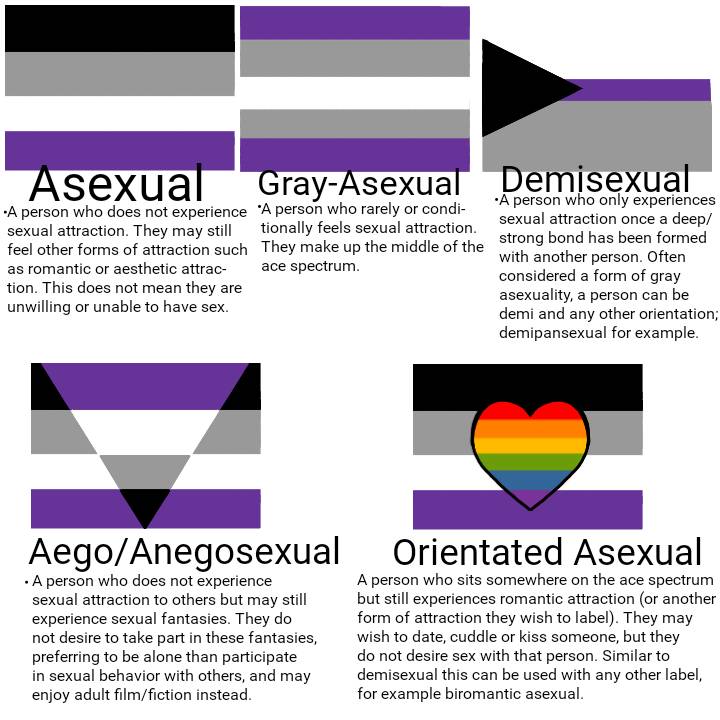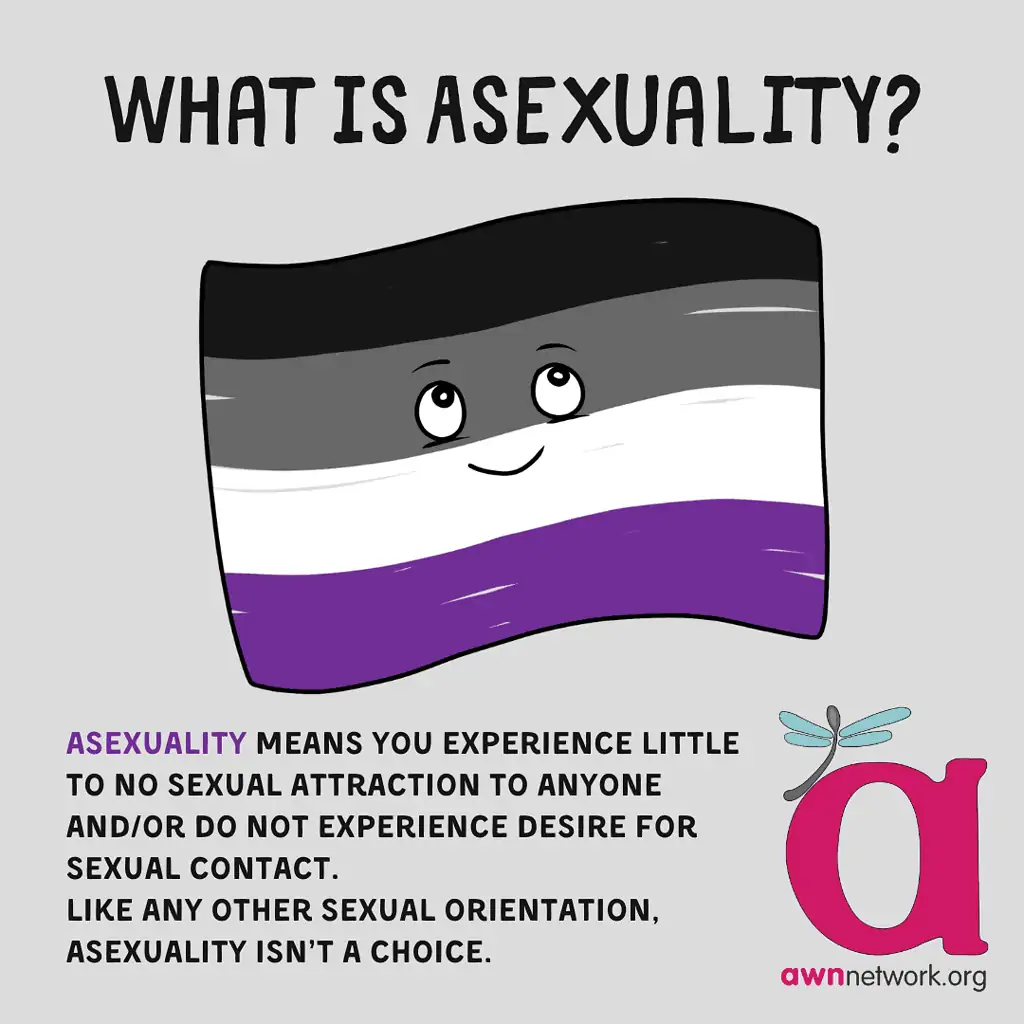Unpacking The Asexual Drake Meme: More Than Just A Laugh
The internet is a vast ocean of humor, and sometimes, a seemingly simple meme can spark conversations far deeper than its initial comedic intent. Enter the "asexual Drake meme." While often used for a quick chuckle, this particular meme, featuring the iconic rapper Drake in various contemplative or unimpressed poses, has inadvertently become a surprising touchstone for discussions around asexuality. It's a fascinating intersection of pop culture and identity, prompting many to wonder: what exactly is asexuality, and why is Drake, of all people, linked to it in meme culture? This article delves into the origins and implications of the "asexual Drake meme," exploring how it sheds light on a sexual orientation that is often misunderstood or overlooked, while also providing a comprehensive understanding of asexuality itself.
Beyond the laughs, the meme serves as an accidental, albeit unconventional, educational tool. It brings the concept of asexuality into mainstream online discourse, even if initially through humor. Understanding this meme requires us to look beyond the surface, to appreciate the nuances of sexual orientation, and to recognize how cultural phenomena can inadvertently contribute to broader awareness and acceptance. Let's unpack this intriguing meme and the important conversation it inadvertently ignites.
Table of Contents
- Understanding Asexuality: The Core Definition
- Drake: A Brief Biography and the Meme Origins
- The Rise of the Asexual Drake Meme
- Why Drake and Why Asexuality? The Meme's Nuances
- Asexuality: An Umbrella Term and Its Diversity
- Debunking Misconceptions About Asexuality
- The Impact of the Asexual Drake Meme on Awareness
- Fostering Understanding and Acceptance Beyond the Meme
Understanding Asexuality: The Core Definition
Before diving deeper into the "asexual Drake meme," it's crucial to establish a clear and accurate understanding of what asexuality truly means. Often misunderstood or conflated with other concepts, asexuality is a distinct sexual orientation that deserves precise definition. According to numerous sources and expert consensus, asexuality is the lack of sexual attraction to others, or low or absent interest in or desire for sexual activity. It may be considered a sexual orientation or the lack thereof. This fundamental definition is key to grasping the broader spectrum of human sexuality.
- Hazel Elise
- %D8%A7%D9%84%D9%84%D9%87%D9%85 %D8%A7%D8%B4%D9%81%D9%8A %D9%83%D9%84 %D9%85%D8%B1%D9%8A%D8%B6
- Lucas Bove
- And We Cheered
- Morgan County Ga Football
To elaborate, sexual attraction, in basic terms, means you find a specific person sexually appealing and want to have sex with them. For asexual people, who might use the term “ace” for brevity, this type of attraction is simply not present, or present only in very limited circumstances. It’s important to note that asexuality is a broad term to describe a lack of sexual attraction to others, or a low interest in sexual activity. Some people consider asexuality to be their sexual orientation, just as heterosexuality or homosexuality are considered sexual orientations.
Asexuality is a sexual orientation in which someone experiences little to no sexual attraction toward others. They might also have little to no desire to have sexual encounters. Also referred to as “ace,” asexuality is an umbrella term for anyone who experiences little to no sexual attraction toward other people. This means that while the core definition remains consistent, asexuality can vary in a lot of ways. Typically, an asexual person has little or no interest in sexual contact with other people. However, they may engage in sexual activity for various reasons, such as for pleasure (not necessarily sexual attraction-driven), to conceive children, or to please a partner. This highlights that asexuality is not about behavior, but about attraction.
Asexual refers to people who do not experience sexual attraction toward others, as well as people who experience limited or conditional sexual attraction and relate to the label. This includes individuals who identify as gray-asexual (experiencing sexual attraction rarely or under specific circumstances) or demisexual (experiencing sexual attraction only after forming a strong emotional bond). Asexuality is typically defined as not experiencing sexual attraction or the desire to have sexual relationships. But according to Darryl C. Elliott, ARNP, a nurse practitioner at the sexual health clinic, a range of sexual orientations and identities can fall under the umbrella of asexuality, and asexuality can vary in a lot of ways depending on the individual's specific experiences and feelings. This expert perspective underscores the diversity within the ace community.
Drake: A Brief Biography and the Meme Origins
Aubrey Drake Graham, widely known as Drake, is one of the most influential and commercially successful recording artists of the 21st century. Born in Toronto, Canada, on October 24, 1986, Drake initially gained recognition for his role as Jimmy Brooks on the teen drama series *Degrassi: The Next Generation*. His transition into music began in the mid-2000s, culminating in a record deal with Lil Wayne's Young Money Entertainment in 2009. Since then, he has released multiple critically acclaimed and commercially successful albums, breaking numerous streaming and chart records.
Drake's musical style often blends singing and rapping, incorporating elements of R&B, hip-hop, and pop. His lyrics frequently explore themes of relationships, fame, wealth, and introspection. He is known for his introspective and often vulnerable lyrical content, which sometimes contrasts with the more overtly aggressive or hyper-masculine personas common in hip-hop. This nuanced portrayal of masculinity, coupled with his often melancholic or pensive expressions captured in various photographs and music videos, inadvertently laid the groundwork for the "asexual Drake meme."
Personal Data and Biodata of Drake
| Category | Information |
|---|---|
| Full Name | Aubrey Drake Graham |
| Date of Birth | October 24, 1986 |
| Place of Birth | Toronto, Ontario, Canada |
| Occupation | Rapper, Singer, Songwriter, Record Producer, Actor, Businessman |
| Genre | Hip Hop, R&B, Pop |
| Years Active | 2001–present |
| Record Labels | Young Money, Cash Money, Republic, OVO Sound |
The Rise of the Asexual Drake Meme
The "asexual Drake meme" isn't tied to a single, definitive origin point but rather evolved organically from various images of Drake that convey a sense of disinterest, boredom, or a general lack of enthusiasm for typical "sexual" or "flirtatious" scenarios. Many of these images come from his music videos, public appearances, or even candid shots where his expression is less overtly charismatic and more... placid. The humor stems from the juxtaposition of Drake, a global superstar often associated with lavish lifestyles, romantic pursuits, and a strong public image, being portrayed as someone utterly devoid of sexual interest.
The meme typically features a split image or a series of panels. One panel might show something conventionally "sexy" or "alluring," and the next panel features Drake looking unimpressed, bored, or simply indifferent. The caption often implies that while others might be excited by the first image, Drake (representing the asexual perspective, albeit humorously) remains unfazed. It’s a classic meme format: setting up an expectation and then subverting it with an unexpected, often deadpan, reaction.
This particular meme gained traction because it tapped into a universal experience of not being interested in something that others find highly appealing. For many, it was just a relatable joke about being "over it" or having different priorities. However, for the asexual community and those learning about it, the meme took on a secondary, more profound meaning. It became an unexpected, albeit often inaccurate, representation of their experience in a highly sexualized world. While the meme's creators likely had no intention of promoting asexuality awareness, its virality inadvertently pushed the term "asexual" into the public consciousness, even if initially through a comedic lens.
Why Drake and Why Asexuality? The Meme's Nuances
The choice of Drake for this meme is multifaceted. Firstly, his immense fame means his image is widely recognizable and easily shareable. Secondly, as mentioned, his public persona, while often confident, also carries an air of introspection and sometimes even melancholy or detachment in certain visuals. This contrasts sharply with the archetypal "hypersexual" male rapper image, making him an ideal, ironic figure for the "asexual Drake meme." His expressions in many of the meme-worthy photos often convey a sense of being above the fray, or simply not engaged with the typical sexual dynamics portrayed in media.
The "asexual" label, in the context of the meme, is often used as a hyperbolic stand-in for "uninterested" or "unimpressed." It's a comedic exaggeration of someone who simply doesn't care about what others might find sexually appealing. However, this comedic exaggeration, while not always accurate to the lived experience of asexual individuals, inadvertently brings the term "asexual" into conversations. It opens a small window for people to ask: "What does 'asexual' even mean?" or "Is that a real thing?"
It’s crucial to understand that the meme does not imply Drake himself is asexual. It is a humorous appropriation of his image to represent a concept. The humor derives from the irony of a prominent figure, often associated with romantic narratives in his music, being depicted as someone who experiences little to no sexual attraction. This irony is what makes the "asexual Drake meme" so potent in the realm of internet culture, allowing it to resonate with a broad audience while subtly introducing a less-understood identity.
Asexuality: An Umbrella Term and Its Diversity
As previously highlighted, asexuality is not a monolithic experience. It’s an umbrella term encompassing a wide range of experiences related to sexual attraction. Just as there's immense diversity within heterosexual, homosexual, or bisexual experiences, the ace spectrum is equally varied. Understanding this diversity is vital to moving beyond simplistic definitions and appreciating the full scope of human sexuality.
Key points about the diversity within asexuality include:
- Lack of Sexual Attraction vs. Lack of Libido: Asexuality is defined by a lack of sexual attraction, not necessarily a lack of libido or sex drive. An asexual person can have a libido but no desire to direct it towards others. They may engage in sexual activity alone, or even with a partner for reasons other than sexual attraction.
- Romantic Orientation: Asexuality describes sexual attraction, but it does not define romantic attraction. Asexual people can be romantically attracted to others. This leads to various romantic orientations within the ace community:
- Aromantic: Experiences little to no romantic attraction.
- Heteroromantic: Romantically attracted to people of a different gender.
- Homoromantic: Romantically attracted to people of the same gender.
- Biromantic/Panromantic: Romantically attracted to people of multiple genders.
- Gray-Asexuality: This sub-category describes individuals who experience sexual attraction rarely, or only under specific circumstances, or with a low intensity. It’s a "gray area" between asexuality and allosexuality (experiencing sexual attraction).
- Demisexuality: A specific form of gray-asexuality where sexual attraction only develops after a strong emotional bond or connection has been formed. This means that while sexual attraction is possible, it is conditional on deep emotional intimacy.
- Varied Interest in Sexual Activity: While asexual people experience little to no sexual attraction, their interest in sexual activity itself can vary. Some are sex-repulsed, others are sex-indifferent, and some are sex-favorable. Engaging in sexual activity does not invalidate one's asexuality if the underlying lack of sexual attraction remains.
This spectrum illustrates that asexuality is a nuanced identity, not a single, uniform experience. The "asexual Drake meme," while simplifying the concept for humor, inadvertently opens the door to these deeper, more accurate understandings.
Debunking Misconceptions About Asexuality
The "asexual Drake meme," like many pop culture representations, risks perpetuating misconceptions if not accompanied by accurate information. It’s vital to address common misunderstandings about asexuality to foster genuine understanding:
- Asexuality is Not a Choice: Just like other sexual orientations, asexuality is an innate part of a person's identity, not a lifestyle choice, a phase, or something that can be "fixed."
- Asexuality is Not a Medical Condition or Disorder: Asexuality is a valid sexual orientation, not a dysfunction, a hormone imbalance, or a psychological issue. There is nothing "wrong" with being asexual.
- Asexual People Can Still Have Relationships: As discussed, many asexual people desire and engage in romantic relationships. Their relationships may or may not include sexual activity, but they are just as valid and fulfilling as any other relationship.
- Asexual People Can Still Experience Love and Intimacy: Asexuality is about sexual attraction, not the capacity for love, emotional connection, or intimacy. Asexual individuals can experience deep emotional bonds, platonic love, and romantic love.
- Asexuality is Not Celibacy or Abstinence: Celibacy is a choice to abstain from sexual activity, often for religious or personal reasons. Asexuality is an inherent lack of sexual attraction. A celibate person may still experience sexual attraction but choose not to act on it, whereas an asexual person does not experience the attraction itself.
- Asexual People Are Not Afraid of Sex: While some asexual people may be sex-repulsed, many are simply indifferent or even sex-favorable. Their orientation is not rooted in fear or trauma, but in a lack of sexual attraction.
These clarifications are essential for promoting accurate education and combating the stigma that often surrounds less-understood identities. The "asexual Drake meme" can be a starting point for these conversations, but it must be followed by robust, accurate information.
The Impact of the Asexual Drake Meme on Awareness
Despite its humorous and sometimes reductive nature, the "asexual Drake meme" has undeniably played a role in raising the profile of asexuality in mainstream online culture. Before the meme, many people had never even heard the term "asexual." Its widespread sharing meant that the word itself, and the concept it represents, entered the lexicon of millions of internet users. This is a significant, albeit unintentional, contribution to awareness.
The impact can be seen in several ways:
- Increased Search Queries: The meme likely led to a spike in search engine queries for "asexuality," "what is asexual," and related terms. This means more people were actively seeking information, even if prompted by a joke.
- Sparking Conversations: Online comments sections, social media threads, and even real-life discussions about the meme often lead to questions about asexuality. This creates opportunities for those who are knowledgeable to share accurate information.
- Validation for Ace Individuals: For some asexual people, seeing the term, even in a meme, can be a form of validation. It shows that their identity, though often invisible, is entering the public consciousness. While the meme itself might not be a perfect representation, its mere existence can make individuals feel less alone.
- Challenging Norms (Subtly): By portraying a popular figure as "asexual," the meme subtly challenges the pervasive assumption that everyone is, or should be, sexually interested in others. It introduces the idea that a lack of sexual attraction is a valid way to exist.
While the "asexual Drake meme" is far from a perfect educational tool, its viral nature has inadvertently served as a gateway for many to encounter the concept of asexuality for the first time. It highlights how digital culture can, in unexpected ways, contribute to the visibility of marginalized identities.
Fostering Understanding and Acceptance Beyond the Meme
The "asexual Drake meme" is a fleeting piece of internet humor, but the conversation it sparks about asexuality is enduring and important. Moving beyond the meme's comedic value, it’s crucial to continue fostering a deeper understanding and acceptance of asexual individuals.
Here’s how we can contribute to this:
- Educate Ourselves and Others: Seek out reliable sources of information about asexuality, such as academic papers, LGBTQ+ organizations, and resources from the asexual community itself. Share this accurate information when opportunities arise, whether in online discussions or real-life conversations.
- Listen to Asexual Voices: The most authoritative and trustworthy source of information about asexuality comes from asexual people themselves. Listen to their experiences, perspectives, and challenges. Support content created by ace individuals.
- Challenge Misconceptions: When you encounter misinformation or stereotypes about asexuality, gently and respectfully correct them with accurate facts. This helps to dismantle harmful biases.
- Promote Inclusive Language: Use inclusive language that acknowledges the diversity of sexual orientations. Avoid making assumptions about people's sexual or romantic interests.
- Advocate for Visibility: Support initiatives that increase the visibility and representation of asexual people in media, education, and public discourse. The more accurately asexuality is portrayed, the less reliant we are on memes for awareness.
The "asexual Drake meme" serves as a quirky reminder that awareness can come from unexpected places. However, true understanding and acceptance require intentional effort. By learning more about asexuality, supporting ace individuals, and challenging misconceptions, we can move beyond the meme to build a more inclusive and informed society where all identities are recognized and respected.
Have you encountered the "asexual Drake meme"? What were your initial thoughts, and how has your understanding of asexuality evolved? Share your insights in the comments below, or explore other articles on our site to deepen your knowledge of diverse identities and cultural phenomena.
- Babytthebratt Leak
- Blackwhiplash Pokemon
- Eyecare Associates Hoover
- Is Lily Du Pregnant
- Gonzalez Furniture

Raising Awareness About Asexuality and Countering the Stigmas – Falcon News

Asexual Spectrum Identities : asexuality

6 Facts about Asexuality and Aromanticism - Autistic Women & Nonbinary